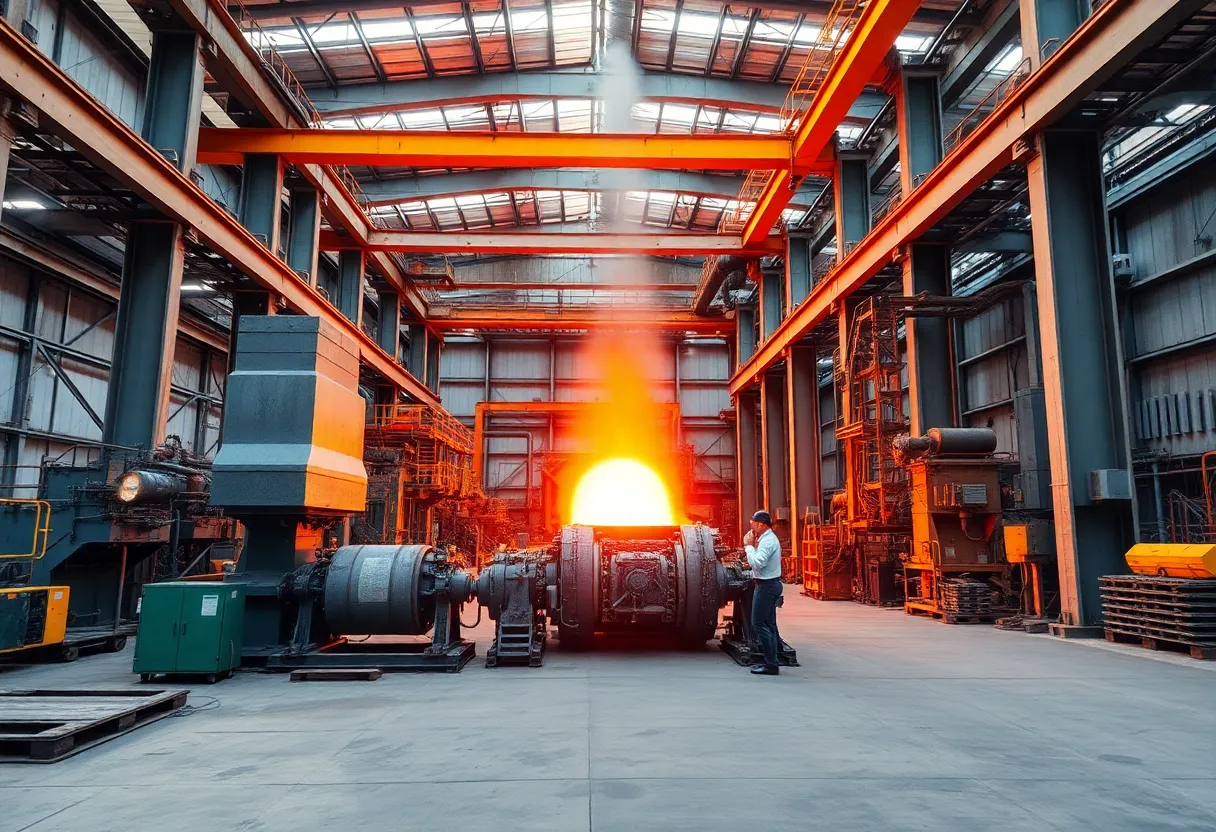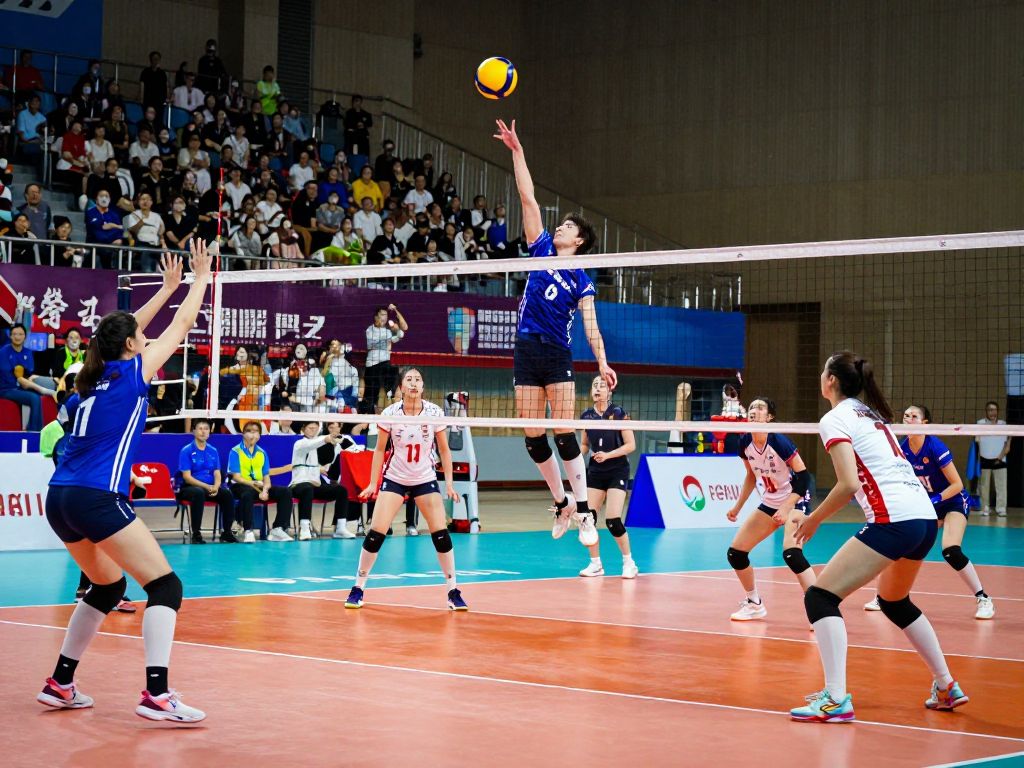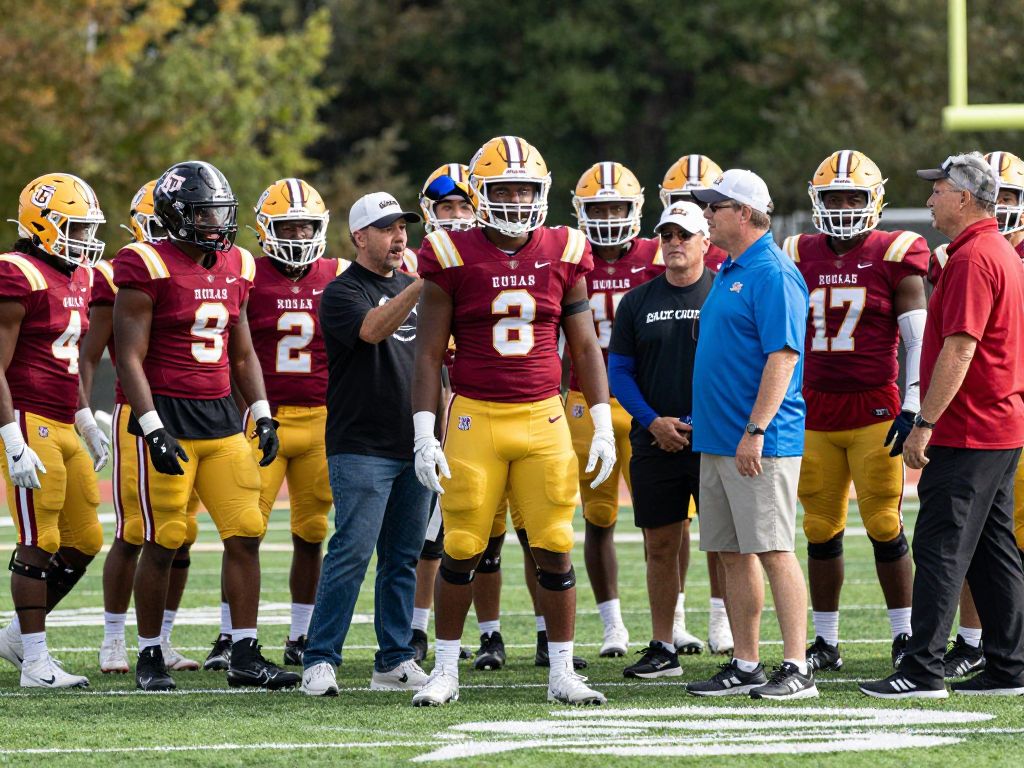Boston, September 22, 2025
News Summary
Boston Metal, a Massachusetts-based startup, has raised $400 million to commercialize a groundbreaking molten oxide electrolysis (MOE) process for emission-free steelmaking. This technology aims to replace carbon-intensive steps in traditional steel production and is targeted for commercial launch by 2028. With significant federal support and plans for international expansion, Boston Metal is at the forefront of the shift toward lower-emission steel, meeting the growing demand for sustainable practices in the steel industry.
Boston — Boston Metal Pioneers Emission-Free Steelmaking Process, Aiming for Commercial Launch by 2028
Boston Metal has raised $400 million in financing to commercialize its emission-free steelmaking technology. The Massachusetts-based startup has developed a molten oxide electrolysis (MOE) process that produces steel without CO2 emissions and is aiming for a commercial launch by 2028.
The company has positioned the technology as a potential direct replacement for many carbon-intensive steps in conventional steelmaking. The company has developed a molten oxide electrolysis (MOE) process that produces steel without CO2 emissions. The process uses electricity instead of coal to eliminate iron ore contaminants at high temperatures (1600°C), and Boston Metal’s process can convert any grade of iron ore into pure liquid metal, eliminating many carbon-intensive steps of traditional steelmaking.
Key funding, demonstrations and partnerships
Alongside private financing, Boston Metal has received public support and targeted private investments to scale its technology. In November 2023, the company received a $50 million grant from the Energy Department to set up a facility in Weirton, West Virginia. Additional federal support came in January 2024, when Boston Metal received $1.75 million in funding from the U.S. Department of Energy for a pilot-scale demonstration of its green steel process.
Private investment activity has also continued. The company announced plans to expand its operations in Asia following a $20 million Series C2 investment from Marunouchi Innovation Partners. At the same time, A subsidiary in Brazil is building a commercial-scale metal recovery operation targeting valuable metals such as niobium, tantalum, and tin.
Scale, commercialization strategy and market context
Boston Metal has demonstrated scaling steps and modular design elements intended to support industrial deployment. Boston Metal has already demonstrated the scalability of its MOE process by commissioning multi-inert anode MOE industrial cells. Operational scale remains early stage: As of 2023, the company has commissioned at least one full-scale cell capable of producing approximately one ton of purified iron per month.
The startup has stated a commercialization pathway that emphasizes licensing technology rather than owning and operating large steel plants. The startup plans to license its technology instead of owning and operating facilities, with potential customers worldwide. The company has also said it sees market opportunities beyond bulk steel production and into higher-value metal streams.
Market context is driving demand for lower-emission steel. With global steel production nearly at 1.9 billion metric tons a year, demand for low-emission steel is increasing. In the U.S., The automotive industry in the U.S. is the third-largest steel consumer. Industry goals and national climate plans are creating policy and market pressure for alternatives to conventional blast-furnace techniques.
Technical background and industry implications
The MOE method traces back to academic work and avoids carbon-based reduction. Boston Metal’s MOE technology began development at MIT in the late 1980s by Professor Donald Sadoway. The process replaces coke and coal with electricity to remove oxygen and other contaminants from iron ore at high temperatures, which critics and proponents note could reduce reliance on hydrogen infrastructure and carbon capture systems. The MOE process can simplify the steelmaking process and reduce reliance on hydrogen infrastructure and carbon capture technologies.
The company states multiple strategic aims. One earlier stated objective is to accelerate market deployment: The startup aims to commercialize its green steel technology by 2026, targeting steel industry’s 2050 zero-carbon goals. The company now also publicly lists its broader target of achieving a commercial launch by 2028.
Outlook and operating priorities
Boston Metal says it is pursuing markets and regions with stable electricity supplies and low-priced power as initial development targets. The company is positioning its modular, licensable technology to be installed by third-party operators and to capture opportunities in both steel and higher-value metal recovery.
Industry-level drivers remain substantial: In 2018, conventional steelmaking emitted an average of 1.85 tons of CO2 per ton of steel, accounting for about 8% of global CO2 emissions. Companies, governments and industries seeking lower-carbon materials are increasing demand, even amid uncertainty in public funding and shifting political climates.
What has been demonstrated so far
- Boston Metal has already demonstrated the scalability of its MOE process by commissioning multi-inert anode MOE industrial cells.
- As of 2023, the company has commissioned at least one full-scale cell capable of producing approximately one ton of purified iron per month.
- In November 2023, the company received a $50 million grant from the Energy Department to set up a facility in Weirton, West Virginia.
- In January 2024, Boston Metal received $1.75 million in funding from the U.S. Department of Energy for a pilot-scale demonstration of its green steel process.
FAQ
- How much financing did Boston Metal raise to commercialize its technology?
- Boston Metal has raised $400 million in financing to commercialize its emission-free steelmaking technology.
- What technology does the company use to make steel without CO2 emissions?
- The company has developed a molten oxide electrolysis (MOE) process that produces steel without CO2 emissions.
- When is Boston Metal aiming for a commercial launch?
- The company is aiming for a commercial launch by 2028.
- Did the company state any earlier commercialization targets?
- The startup aims to commercialize its green steel technology by 2026, targeting steel industry’s 2050 zero-carbon goals.
- What are recent public grants or federal funding the company has received?
- In November 2023, the company received a $50 million grant from the Energy Department to set up a facility in Weirton, West Virginia.
- Has Boston Metal received any pilot-scale funding from the U.S. Department of Energy?
- In January 2024, Boston Metal received $1.75 million in funding from the U.S. Department of Energy for a pilot-scale demonstration of its green steel process.
- How does the MOE process operate at high temperatures?
- The MOE process uses electricity instead of coal to eliminate iron ore contaminants at high temperatures (1600°C).
- Can the process handle different iron ore grades?
- Boston Metal’s process can convert any grade of iron ore into pure liquid metal, eliminating many carbon-intensive steps of traditional steelmaking.
- Has Boston Metal demonstrated scalability?
- Boston Metal has already demonstrated the scalability of its MOE process by commissioning multi-inert anode MOE industrial cells.
- What production capability had the company reached by 2023?
- As of 2023, the company has commissioned at least one full-scale cell capable of producing approximately one ton of purified iron per month.
- What is the global context for demand in low-emission steel?
- With global steel production nearly at 1.9 billion metric tons a year, demand for low-emission steel is increasing.
- Which U.S. industry is a major steel consumer?
- The automotive industry in the U.S. is the third-largest steel consumer.
- Is the company pursuing markets beyond steel?
- A subsidiary in Brazil is building a commercial-scale metal recovery operation targeting valuable metals such as niobium, tantalum, and tin.
- What is Boston Metal’s business model for deployment?
- The startup plans to license its technology instead of owning and operating facilities, with potential customers worldwide.
- How does MOE compare with hydrogen or carbon capture approaches?
- The MOE process can simplify the steelmaking process and reduce reliance on hydrogen infrastructure and carbon capture technologies.
- What is the historical emissions footprint of conventional steelmaking?
- In 2018, conventional steelmaking emitted an average of 1.85 tons of CO2 per ton of steel, accounting for about 8% of global CO2 emissions.
{
“@context”: “https://schema.org”,
“@type”: “FAQPage”,
“mainEntity”: [
{
“@type”: “Question”,
“name”: “How much financing did Boston Metal raise to commercialize its technology?”,
“acceptedAnswer”: {
“@type”: “Answer”,
“text”: “Boston Metal has raised $400 million in financing to commercialize its emission-free steelmaking technology.”
}
},
{
“@type”: “Question”,
“name”: “What technology does the company use to make steel without CO2 emissions?”,
“acceptedAnswer”: {
“@type”: “Answer”,
“text”: “The company has developed a molten oxide electrolysis (MOE) process that produces steel without CO2 emissions.”
}
},
{
“@type”: “Question”,
“name”: “When is Boston Metal aiming for a commercial launch?”,
“acceptedAnswer”: {
“@type”: “Answer”,
“text”: “The company is aiming for a commercial launch by 2028.”
}
},
{
“@type”: “Question”,
“name”: “Did the company state any earlier commercialization targets?”,
“acceptedAnswer”: {
“@type”: “Answer”,
“text”: “The startup aims to commercialize its green steel technology by 2026, targeting steel industry’s 2050 zero-carbon goals.”
}
},
{
“@type”: “Question”,
“name”: “What are recent public grants or federal funding the company has received?”,
“acceptedAnswer”: {
“@type”: “Answer”,
“text”: “In November 2023, the company received a $50 million grant from the Energy Department to set up a facility in Weirton, West Virginia.”
}
},
{
“@type”: “Question”,
“name”: “Has Boston Metal received any pilot-scale funding from the U.S. Department of Energy?”,
“acceptedAnswer”: {
“@type”: “Answer”,
“text”: “In January 2024, Boston Metal received $1.75 million in funding from the U.S. Department of Energy for a pilot-scale demonstration of its green steel process.”
}
},
{
“@type”: “Question”,
“name”: “How does the MOE process operate at high temperatures?”,
“acceptedAnswer”: {
“@type”: “Answer”,
“text”: “The MOE process uses electricity instead of coal to eliminate iron ore contaminants at high temperatures (1600°C).”
}
},
{
“@type”: “Question”,
“name”: “Can the process handle different iron ore grades?”,
“acceptedAnswer”: {
“@type”: “Answer”,
“text”: “Boston Metal’s process can convert any grade of iron ore into pure liquid metal, eliminating many carbon-intensive steps of traditional steelmaking.”
}
},
{
“@type”: “Question”,
“name”: “Has Boston Metal demonstrated scalability?”,
“acceptedAnswer”: {
“@type”: “Answer”,
“text”: “Boston Metal has already demonstrated the scalability of its MOE process by commissioning multi-inert anode MOE industrial cells.”
}
},
{
“@type”: “Question”,
“name”: “What production capability had the company reached by 2023?”,
“acceptedAnswer”: {
“@type”: “Answer”,
“text”: “As of 2023, the company has commissioned at least one full-scale cell capable of producing approximately one ton of purified iron per month.”
}
},
{
“@type”: “Question”,
“name”: “What is the global context for demand in low-emission steel?”,
“acceptedAnswer”: {
“@type”: “Answer”,
“text”: “With global steel production nearly at 1.9 billion metric tons a year, demand for low-emission steel is increasing.”
}
},
{
“@type”: “Question”,
“name”: “Which U.S. industry is a major steel consumer?”,
“acceptedAnswer”: {
“@type”: “Answer”,
“text”: “The automotive industry in the U.S. is the third-largest steel consumer.”
}
},
{
“@type”: “Question”,
“name”: “Is the company pursuing markets beyond steel?”,
“acceptedAnswer”: {
“@type”: “Answer”,
“text”: “A subsidiary in Brazil is building a commercial-scale metal recovery operation targeting valuable metals such as niobium, tantalum, and tin.”
}
},
{
“@type”: “Question”,
“name”: “What is Boston Metal’s business model for deployment?”,
“acceptedAnswer”: {
“@type”: “Answer”,
“text”: “The startup plans to license its technology instead of owning and operating facilities, with potential customers worldwide.”
}
},
{
“@type”: “Question”,
“name”: “How does MOE compare with hydrogen or carbon capture approaches?”,
“acceptedAnswer”: {
“@type”: “Answer”,
“text”: “The MOE process can simplify the steelmaking process and reduce reliance on hydrogen infrastructure and carbon capture technologies.”
}
},
{
“@type”: “Question”,
“name”: “What is the historical emissions footprint of conventional steelmaking?”,
“acceptedAnswer”: {
“@type”: “Answer”,
“text”: “In 2018, conventional steelmaking emitted an average of 1.85 tons of CO2 per ton of steel, accounting for about 8% of global CO2 emissions.”
}
}
]
}
Quick facts table
| Item | Detail |
|---|---|
| Company | Boston Metal |
| Primary technology | Molten oxide electrolysis (MOE) |
| Private financing raised | $400 million |
| Federal grants (selected) | $50 million (Energy Department, November 2023) — Weirton, West Virginia; $1.75 million (U.S. Department of Energy, January 2024) |
| Commercial launch target | Commercial launch by 2028; earlier commercialization aim by 2026 (targeting 2050 zero-carbon goals) |
| Modular demonstration capacity | At least one full-scale cell producing approximately one ton of purified iron per month (as of 2023) |
| International expansion | Planned expansion in Asia after $20 million Series C2 investment; subsidiary in Brazil for metal recovery |
| Global steel production context | Nearly 1.9 billion metric tons a year |
| 2018 emissions benchmark | Conventional steelmaking: 1.85 tons CO2 per ton of steel (about 8% of global CO2 emissions) |
Deeper Dive: News & Info About This Topic
HERE Resources
Additional Resources
- Canary Media: Boston Metal Decarbonization Technology
- Wikipedia: Steel
- Fastmarkets: Boston Metal Carbon-Free Metals Production
- Google Search: Boston Metal green steel
- Latitude Media: Boston Metal Funding
- Encyclopedia Britannica: Sustainable Development
- Reuters: Green Technologies in Steelmaking
- Google News: Green Steel Innovation
- New Atlas: Green Steel Plant Boston Metal
- Google Scholar: Boston Metal steelmaking
- BBC: Boston Metal Emission-Free Steelmaking

Author: STAFF HERE BOSTON WRITER
The BOSTON STAFF WRITER represents the experienced team at HEREBoston.com, your go-to source for actionable local news and information in Boston, Suffolk County, and beyond. Specializing in "news you can use," we cover essential topics like product reviews for personal and business needs, local business directories, politics, real estate trends, neighborhood insights, and state news affecting the area—with deep expertise drawn from years of dedicated reporting and strong community input, including local press releases and business updates. We deliver top reporting on high-value events such as Boston Marathon, Head of the Charles Regatta, and Boston Harborfest. Our coverage extends to key organizations like the Greater Boston Chamber of Commerce and Associated Industries of Massachusetts, plus leading businesses in finance, biotech, and insurance that power the local economy such as Fidelity Investments, Biogen, and Liberty Mutual Insurance. As part of the broader HERE network, we provide comprehensive, credible insights into Massachusetts's dynamic landscape.





